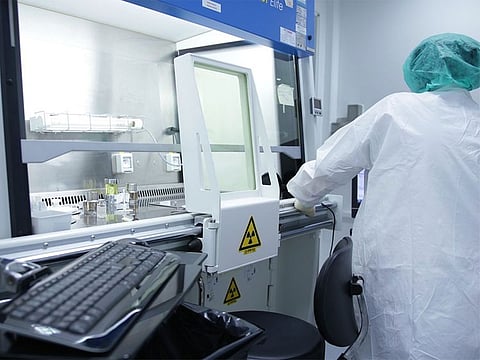More than 60 per cent of hospitals in Abu Dhabi now digitally connected
Malaffi Health Information Exchange platform now records 50% of all patient episodes

Also In This Package
Abu Dhabi: More than 60 per cent of all hospitals in Abu Dhabi emirate are now connected to Malaffi, the region’s first Health Information Exchange (HIE) platform, and are now exchanging patient records.
The system now boasts 87 million unique clinical records, and it captures 50 per cent of the total number of episodes in the emirate.
In a statement on Wednesday, Malaffi, said the connected facilities include 25,923 doctors, nurses and health professionals.
What is Malaffi
Malaffi is a key initiative of the emirate’s health regulator, the Department of Health, and was launched about a year ago. The onboarding of large groups of health facilities allows for better, safer decision-making, and accurately tracks information on patient visits, medical problems, allergies, procedures, lab results and medications. In total, the platform has connected 107 million clinical records from 16 different Electronic Medical Records systems, operated by over 500 connected facilities.
Some of the most recent facilities to be connected include SEHA Emirates Hospita, the Emirates International Hospital, Dar Al Shifaa Hospital, Bareen Hospital and Cambridge Medical and Rehabilitation Hospital.
Best care possible
“Transforming Abu Dhabi’s healthcare sector and delivering the best care possible is at the heart of everything we do. Connecting healthcare and having better data is an integral part of that. This is a time like no other. We are seeing people living longer than ever before, the rise of chronic diseases with hospitals operating at full capacity, and new diseases – such as COVID-19 – have demonstrated the need for innovative platforms such as Malaffi, that serve the healthcare sector in Abu Dhabi and enable the provision of high-quality health services to residents,” said Dr Jamal Al Kaabi, acting nundersecretary at the DoH.

“The Malaffi platform, which was launched a year ago, reflects the forward-thinking approach of the Abu Dhabi government, to harness technology to unify the efforts of the government and private sectors and increase their impact, especially in the critical healthcare sector. By enabling healthcare providers to quickly access all required information about their patients, Malaffi is a clear reflection of the leaders’ drive to provide high quality healthcare to all segments of society.” He added.
Expanding network
Currently, Malaffi connects 35 healthcare groups and a total of 40 hospitals and 403 clinics, which are now exchanging medical information through the HIE platform.
“We have been on an ambitious and important journey of connecting healthcare in Abu Dhabi, from the smaller providers – medical centres, dental clinics and pharmacies – to the larger, multi-specialty, cutting edge hospitals. Witnessing the lifesaving benefits that Malaffi is already providing to the industry, especially in times like these, makes me immensely proud of all we have achieved together. We can’t achieve this without each another. Together we are stronger, and we will continue to go from strength to strength as the final providers join Malaffi and connectivity becomes part of Abu Dhabi’s DNA,” said Atif Al Braiki, chief executive officer of Abu Dhabi Health Data Services, Malaffi’s operator.
Response measures
During the COVID-19 pandemic, the DOH was better set to evaluate and implement response measures, based on real-time pandemic indicators from the centralised database of all COVID-19 results in Abu Dhabi. Furthermore, frontliners were allowed urgent access to Malaffi to access test results and vital medical history information which has been critical in their clinical decision-making process.
Having quick access to COVID-19 results through Malaffi has also allowed doctors to immediately respond to patients’ needs and ease the anxiety from waiting for test results.
Sign up for the Daily Briefing
Get the latest news and updates straight to your inbox









